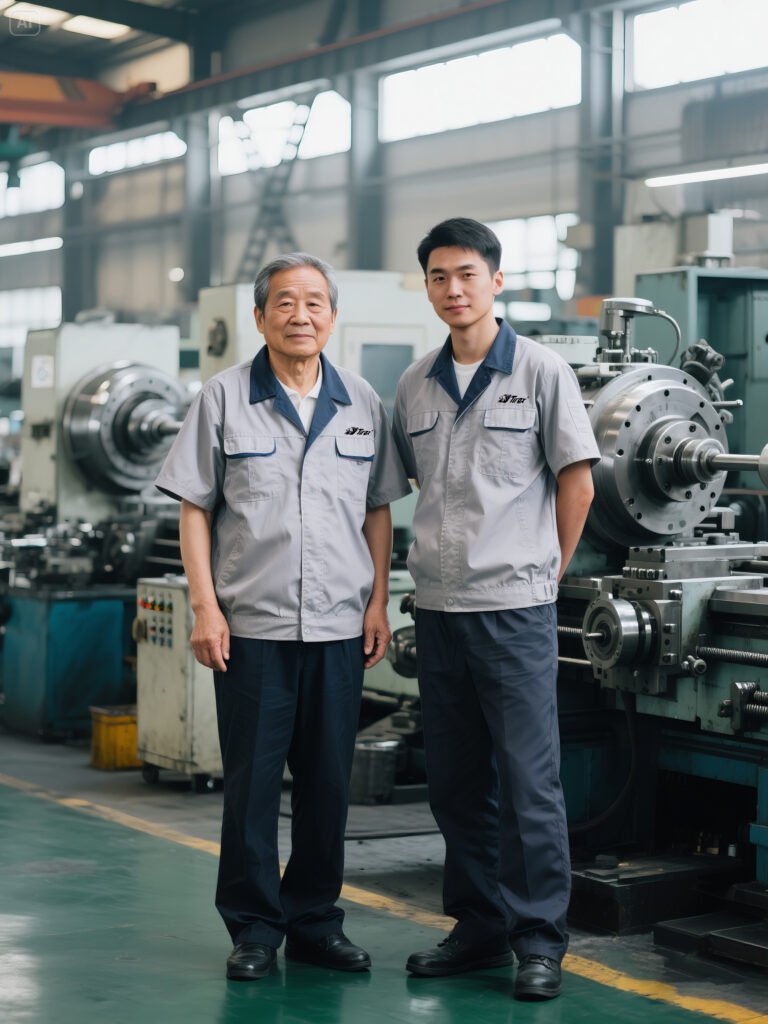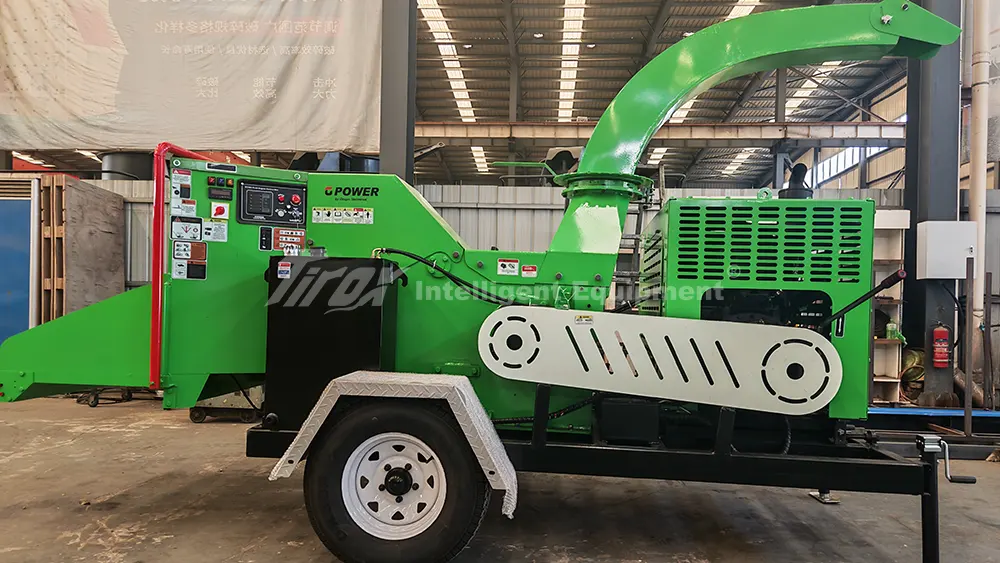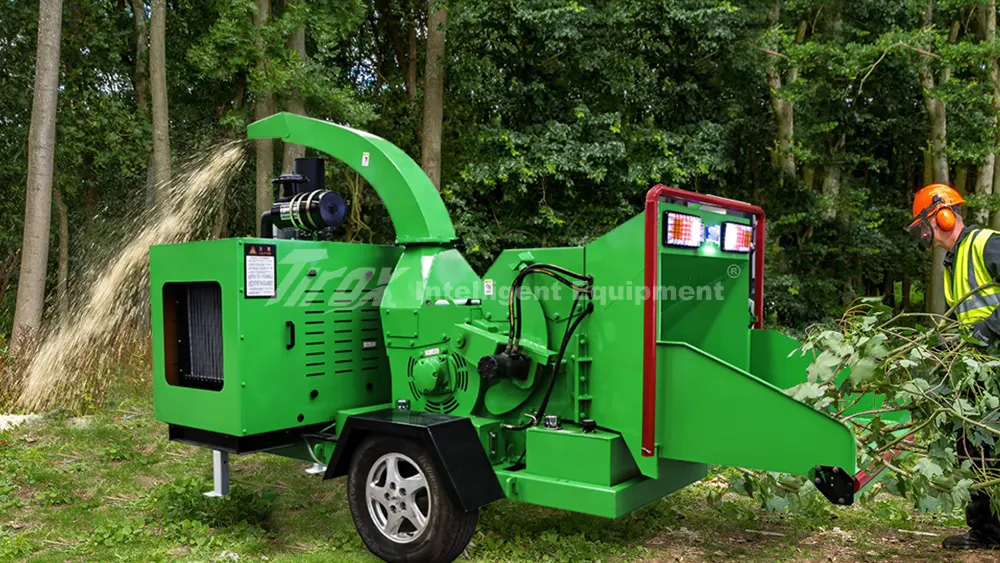Faced with a mountain of green waste, choosing the right wood chipper feels overwhelming. Getting it wrong can waste money and cause frustration.
Selecting a wood chipper requires careful consideration of your specific needs, including the types of materials you’ll process, their intended use, and the machine’s capacity, power, and key features.
I understand this decision can seem complex. With over 22 years in this industry, I’ve helped countless customers navigate this process. Let me share what I’ve learned to make your choice clearer and ensure you invest in a machine that truly serves your purpose.
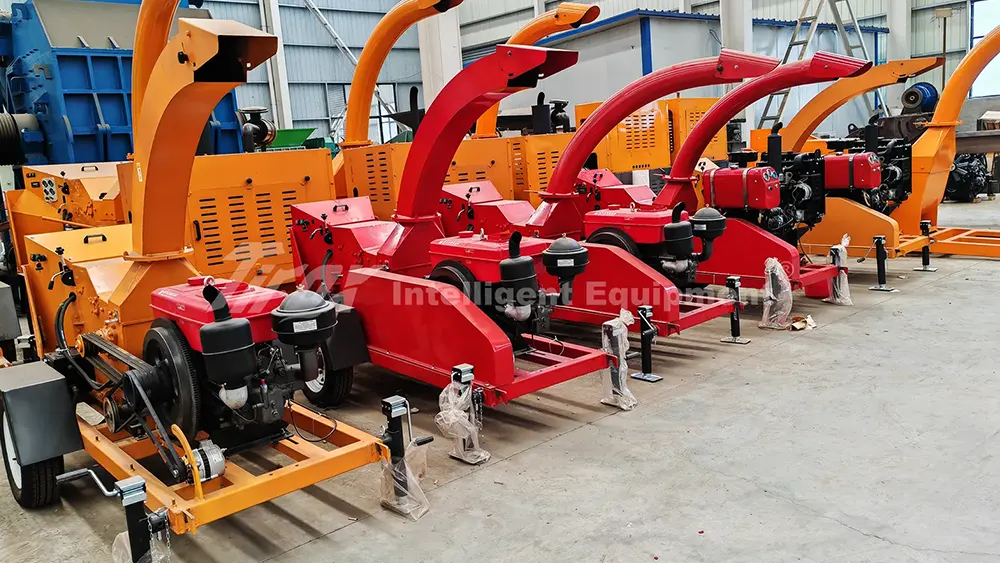
How do I choose a wood chipper?
You’ve decided you need a chipper, but the sheer variety available is daunting. How do you cut through the options to find the perfect match for your job?
To choose the right wood chipper, you must first understand your specific raw materials and how you intend to use the resulting wood chips.
Understand Your Needs
When I started, we relied on guesswork. Now, we know better. The first step is always analyzing your raw materials [7][13]. What kind of wood will you be chipping? Is it hard oak or soft pine? Do you mainly have branches, or are you processing whole logs or even wooden waste [7][15]? The diameter and hardness of your material will dictate the size and power needed [7][8][15]. For instance, processing dense hardwoods requires a more robust machine than softwoods.
What will you do with the chips? If you’re producing biomass fuel, chip size and uniformity are critical—often smaller chips packed tightly [7][15]. For landscaping mulch, size can be more flexible, and for compost, chips provide valuable carbon [7][13][15]. Knowing the end-use helps determine the necessary chip size and, therefore, the type of chipper required [7][15]. This ensures you get the most value from your chipping operation, whether for energy generation, soil enrichment, or other applications. You can find more insights on this topic in our blog post about choosing the right wood chipper.
What must be considered when deciding what wood chipper model is needed?
Once you know what you’re feeding the machine and what you want to get out, the next logical step is looking at the machine’s specifications.
When deciding on a wood chipper model, key considerations include its processing capacity, the feed size it can handle, the power of its engine, and the type of cutting mechanism.
Evaluate Key Machine Parameters
This is where the technical details come into play. As a manufacturer, we focus on engineering machines that meet specific performance criteria.
- Processing Capacity (Throughput Rate): This is how much material the chipper can process per hour. It’s measured in tons per hour or cubic meters per hour [8][15]. If you have a large operation, you’ll need a higher throughput rate to avoid bottlenecks [8][15]. For smaller jobs, a lower capacity might be sufficient and more cost-effective [8][15]. For example, our ZSYL-1063 model handles substantial volumes, while smaller units suit more occasional use [5]. Choosing a capacity that matches your production needs is crucial to avoid creating a bottleneck or overspending on unnecessary power [8][15].
- Feed Size: This specifies the maximum diameter of the wood the chipper can accept [7][13]. If you routinely process large logs, you need a chipper with a larger feed intake. For instance, our ZSYL-1263 series can handle larger diameters compared to smaller models [3, 4, 6]. Always check the specifications against your largest anticipated material size to ensure efficient processing [7][13].
- Engine Power and Brand: The engine is the heart of the chipper. Power output, often measured in horsepower (HP) or kilowatts (kW), directly impacts its ability to process tougher materials and maintain consistent operation [2, 5, 6]. We offer options with reputable engine brands like Cummins and Perkins, ensuring reliable performance and easier parts availability worldwide [1]. The specific engine power, like the 197 HP Cummins in some of our ZSYL-1263 models, determines the chipper’s overall capability [2]. Choosing a suitable engine ensures the chipper can handle your workload effectively.
- Rotor and Blade Type: Wood chippers use different cutting mechanisms. Drum chippers use blades on a rotating drum, while disc chippers have blades mounted on a disc [19]. Hammer rotors use hammers for pulverizing, which are better if you anticipate metal contamination [21]. The material of the blades, such as hardened steel like H12 or tougher A8B, also affects durability and performance when processing hard materials [19][23]. The right choice here depends on the abrasive nature of your wood and any potential contaminants.
Guide To Buying A Wood Chipper
With the core specifications understood, it’s time to look at the features and operational aspects that make a chipper truly work for you.
Beyond core specs, a good buying guide emphasizes features like feeding systems, smart controls, durability, after-sales support, and a thorough cost-benefit analysis.
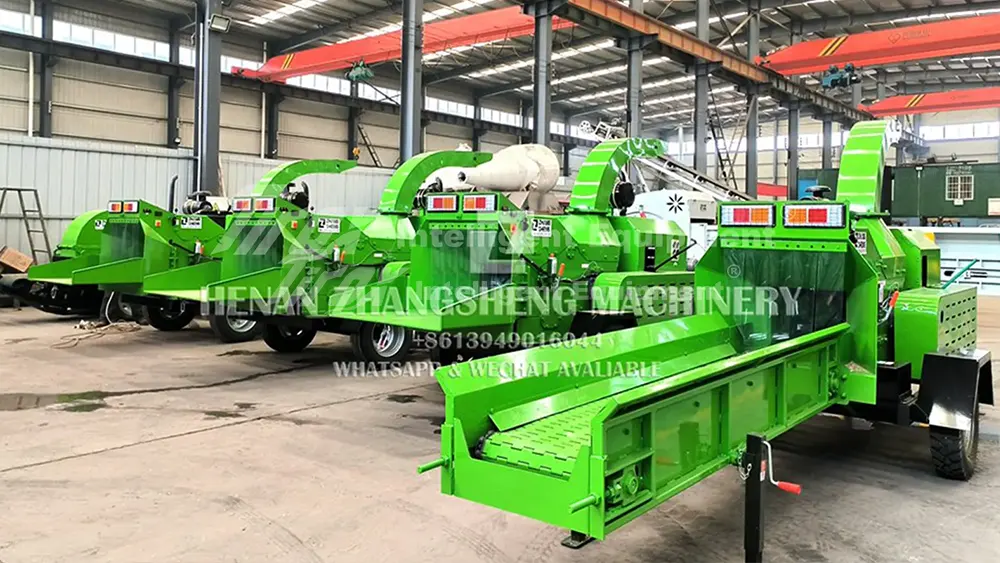
Essential Features and Considerations
It’s not just about raw power; the right features make a chipper efficient and user-friendly.
- Feeding Systems and Controls: Modern wood chippers often come with advanced feeding systems. Hydraulic forced feeding ensures a consistent material flow, adjusting speed based on the wood [1][3][4]. Smart feeding systems monitor load to auto-adjust or stop, preventing jams [1]. User-friendly controls and smart panels displaying operating status (like oil level or water temperature) enhance safety and operational ease [1]. For example, our smart control panels provide vital information at a glance [1]. These features simplify operation and protect your investment. You can learn more about these advanced features on our products page.
- Durability and Maintenance: A chipper is a significant investment, so durability is paramount. Look for machines built with high-strength steel and advanced manufacturing processes [11][18]. Consider the ease of maintenance; a well-designed machine with readily accessible parts will save time and money [11][18]. Understanding the maintenance cycle and cost of replacement parts is crucial for long-term operational costs [11][18]. For example, using durable blade materials like A8B can significantly extend service life compared to standard H12 steel for abrasive materials [23].
- Supplier and After-Sales Support: Choosing a reputable supplier with strong after-sales service is vital [10][14]. This includes reliable technical support, installation assistance, and prompt maintenance or repair services to minimize downtime [10][14]. With 22 years of experience, we provide robust support to our customers worldwide [1]. Good support ensures your machine keeps running smoothly and efficiently.
- Cost-Benefit Analysis: An initial purchase price is only one part of the equation. Consider the long-term benefits, such as improved production efficiency and reduced operating costs [9][16]. Energy efficiency also plays a role in lowering running expenses and environmental impact [9][16]. Weigh the initial investment against the long-term savings and productivity gains. I always advise customers to think about the total cost of ownership, not just the sticker price.
Conclusion
Choosing the right wood chipper involves understanding your material, defining your needs, and evaluating the machine’s capacity, features, and a supplier’s support.

